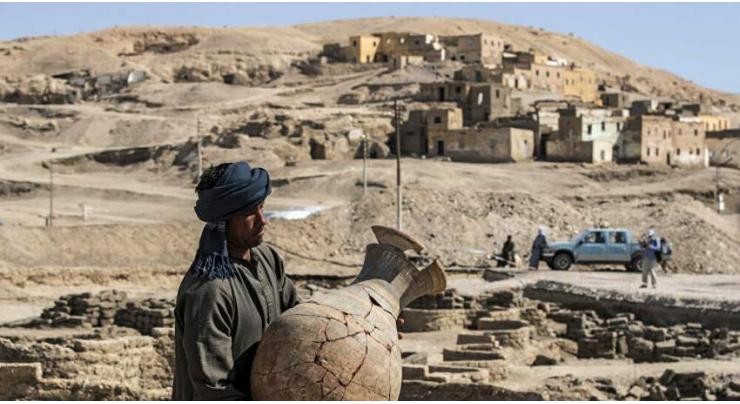
- Home
- World
- News
- Newly-Found Ancient City in Luxor to Take at Least 10 Years to Fully Excavate - Scientist
Newly-Found Ancient City In Luxor To Take At Least 10 Years To Fully Excavate - Scientist
Umer Jamshaid Published April 10, 2021 | 11:51 PM

It will take archaeologists at least 10 years to fully excavate the recently discovered ancient city, dubbed The Rise of Aten, that had been buried under sand in modern Egypt's eastern Luxor governorate for over 3,000 years, lead archaeologist Zahi Hawass told Sputnik
LUXOR (Egypt) (UrduPoint News / Sputnik - 10th April, 2021) It will take archaeologists at least 10 years to fully excavate the recently discovered ancient city, dubbed The Rise of Aten, that had been buried under sand in modern Egypt's eastern Luxor governorate for over 3,000 years, lead archaeologist Zahi Hawass told Sputnik.
On Thursday, the Egyptian Ministry of Tourism and Antiquities said that an expedition led by Hawass, the former minister for antiquities affairs, had discovered the city on the west bank of the Nile near Luxor. It is the largest ancient settlement ever discovered in Egypt.
The 3,000-year-old city is believed to have been founded by 14th century BC pharaoh Amenhotep III and remained active throughout the reign of pharaoh Tutankhamun and his successor, Ay.
"This is a full-fledged city, it is considered to be the largest ever discovered settlement ... The work will last at least 10 years, since we need to excavate the entire city, as well as the area of temples," Hawass said.
According to the scientist, there are three quarters in the city where there are premises for storing meat and areas where clothes and raw bricks were produced.
"We expect to move toward the temple area by September," Hawass added.
The team began excavations last September, and in a matter of weeks, they uncovered mud brick structures spreading in all directions. According to the Egyptian ministry, archaeologists ultimately dug up the site of a large city preserved in good condition, with relatively complete walls and living units which still contained everyday life tools. Previously, 60 missions of archaeologists worked unsuccessfully at this site, according to Mostafa Waziri, the secretary-general of the Supreme Council of Antiquities of Egypt.
Recent Stories

Currency Rate In Pakistan - Dollar, Euro, Pound, Riyal Rates On 18 April 2024

Today Gold Rate in Pakistan 18 April 2024

Saka and Odegaard start for Arsenal, Guerreiro in Bayern midfield

Qatar PM says re-evaluating Israel-Hamas mediation role

Govt spokesperson terms allegations of PTI's Marwat against Saudi Arabia 'heinou ..

Minister appreciate UAE’s support for Pakistan economic challenges

Manchester City v Real Madrid Champions League starting line-ups

MIGA's support Pakistan in attracting foreign investments: Federal Minister for ..

Walker returns to captain Man City for Real Madrid clash

Action taken against price list violations in Khanewal district

DC chairs review meeting of DEG

Turkey accuses Israel's Netanyahu of using war 'to stay in power'
More Stories From World
-
Russian missile barrage on Ukraine city kills 18
8 minutes ago -
Trump due back in court as jury takes shape
28 minutes ago -
Indonesia airport near volcano closed after eruptions: ministry
38 minutes ago -
'Human-induced' climate change behind deadly Sahel heatwave: study
38 minutes ago -
Trump meets with Polish president in New York
38 minutes ago -
Karsten Warholm: from local street race to world record
48 minutes ago
-
Russian missile barrage on Ukraine city kills 17
48 minutes ago -
Arsenal paid for 'big mistake' in Bayern defeat: Arteta
58 minutes ago -
Biden seeks steel tariffs on 'cheating' China
58 minutes ago -
At IMF, Brazil and France renew push for 'fairer' international taxation
1 hour ago -
US to reimpose oil sanctions on Venezuela
1 hour ago -
US Senate rejects bid to oust homeland security chief
1 hour ago